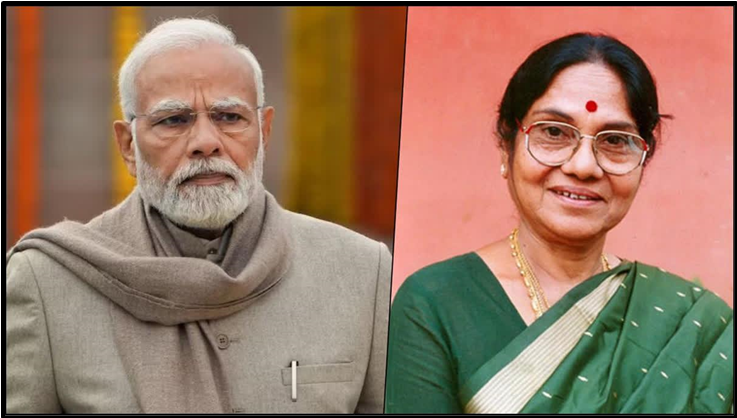PM griefs over demise of Kannada film personality Leelavathi
News: Over the passing of renowned Kannada film star Leelavathi Prime Minister expressed his condolences to Leelavathi’s family and supporters.
About Leelavathi
- Indian actress Leelavathi (born 1937) appeared in Telugu, Tamil, and Kannada motion pictures.
- Throughout her more than 50-year career, she appeared in over 600 films (more than 400 of them in Kannada alone).
- She is well-known for her numerous standout roles, including those in Santha Thukaram, Bhakta Kumbara, and Mana Mecchida Madadi.
- She received the 1999 Filmfare Awards as well as the Dr. Rajkumar Award.
- She laid the foundation stone for female actresses in Kannada movies and after her debut a wave of talented women, including Bharathi, Kalpana, Jayanthi, and Chandrakala.
| Indian cinema’s history
● The idea of motion pictures was introduced to India by the Lumiere Brothers, who are renowned for creating the Cinematograph. ● In 1896, they showed six silent short films in Bombay that were successful in drawing viewers in. ● The first film was called Coconut Fair and Our Indian Empire, and it was taken in 1897 by an unidentified photographer. ● Harishchandra Bhatavdekar, also referred to as Save Dada, was the first Indian to attempt a motion picture. ● Indian filmmakers were scarce in the 1900s, but F.B. Thanawalla, who made Taboot Procession and Splendid New Views of Bombay, was one of the few who made significant films. ● As the demand for these films grew over time and Major Warwick met this need in 1900 when he opened Madras (now Chennai)’s first movie theater. ● Subsequently, in Calcutta (now Kolkata), affluent Indian businessman Jamshedjee Madan opened the Elphinstone Picture House in 1907. ● The first Hollywood-based agency in India was founded by Universal Studios in 1916. ● Silent films dominated the decade from 1910 to 1920. Despite being dubbed silent films, there was music and dancing throughout, so they weren’t completely silent. ● The sarangi, tabla, harmonium, and violin were among the live musical instruments that accompanied the films even during their theatrical screenings. ● N.G. Chitre and R.G. Torney collaborated on the first Indo-British silent film in 1912 and the name of their movie was Pundalik. ● The first silent Indian film was produced by Dadasaheb Phalke in 1913 under the title Raja Harishchandra. ● Dadasaheb Falke is known as the “Father of Indian Cinema.” In 1917, he is also credited with creating Lanka Dahan, the first box office hit. ● The founding of Dadasaheb Phalke’s Hindustan Cinema Films Company and the Kohinoor Film Company in 1918 provided a boost to the film industry. ● After movies started to bring in a respectable sum of money, the government introduced the “Entertainment Tax” in Calcutta in 1922 and Bombay the following year. ● The first Indian woman to produce and direct her own film, Bulbul-e-Paristan (1926), was Fatma Begum. |




